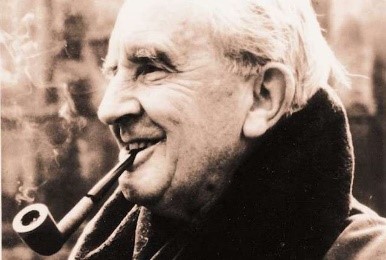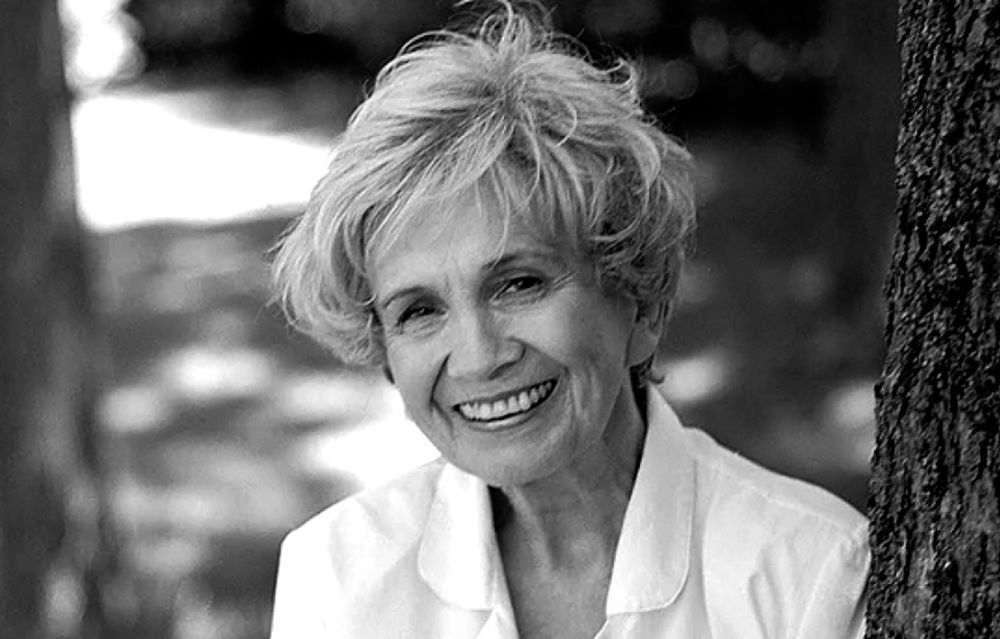
Handbook-subarticles
Book title
The Lord of the Rings – The Hobbit
Author
J. R. R. Tolkien

Bibliographic information
Paperback, 366 pages
Published: August 15th 2002 by Houghton Mifflin (first published September 21st 1937)
Original Title: The Hobbit : or There and Back Again
ISBN 0618260307 (ISBN13: 9780618260300)
Edition Language: English
Series: Middle-Earth Universe, The History of the Hobbit #1-2
Links (adaptations, reviews, full texts etc.)
Theme
The evolution and maturation of the protagonist, Bilbo Baggins, is central to the story. This journey of maturation, where Bilbo gains a clear sense of identity and confidence in the outside world, may be seen as a Bildungsroman rather than a traditional quest.
Short summary
The action begins when the wizard Gandalf and 13 patrons enter the house of Bilbo Bagins: Thorin Hrastoštit, Óin, Glóin (his son Gimli is one of the main figures in the Lord of the Rings), Dwalin, Balin (He was Gimli's cousin who was in Khazad-Dum), Bifur, Bofur, thick Bombur, brothers Feli and Kili, Dori, Nori and Ori). They persuade Bilbo to go with them on the voyage and soon move. Soon, the troupe is captured by Troy, but the Trolls fail to hide from the sun and become obscure. The fellow takes some of their treasures and goes to Rivendell. From there they move to Mount Erebor to kill the dragon Smaug. After leaving the Rivendell they were captured by the Goblins but failed to escape. During the run, Bilbo lost, and in the dark found the unique Ring. With the help of the eagles they manage to cross over the Misty Mountains, and come to the Beorn House. They then go to Mirkwood, where they captured King of the Thatcher of Thatcher. But once again, they escape to the wine barrels and go to Lake Town. In Lake Town they are supplied and moved to the mountains. Bilbo manages to steal the gold cup, and Smaug from the revenge attack on Jezergrad. Bard manages to kill the dragon. The congregation remains closed in the mountains, and the army of people from Lake Town, the viles of Mrkodol, and the dwarves from the Iron Mountain are moving treasured. The armies are preparing for the attack, but then the Orcs from the Maglena Mountains are attacked and they unite. With great losses, the Anti-Military Army wins and shares the treasures in equal parts. This battle is still called the battle of the five armies.
Why is the story appropriate for the targeted groups of RSP readers?
1. Appropriate for the target group of readers
2. Reflects readers interests
3. It is highly motivational
4. Recommendations and the report emerged from the survey results
What are the distinguished readers interests reflected by this book/story?
It is future oriented and guides the pupils in terms they can understand in both, their conscious and unconscious mind in order to relinquish their infantile dependency wishes and achieve a more stratifying independent existence. The wish-fulfillment element of fantasy both relieves anxiety and shows the child that personal success can be obtained, although at a certain price. At the heart of this lesson is the fact that the hero must work for his success. Magic accessories and good advice may be given to him, but he must use these aids actively and appropriately, and success often comes only after years of obscure labor or initial failure. Thus, the development of the hero is less a matter of change than of self-discovery.
Why is this story motivational for the pupils?
1. The Hobbit presents an intriguing variation on the usual quest narrative. The object of the expedition, Smaug's treasure, is not desired by the main character, Bilbo Baggins. The seeker is instead the obsessive dwarf Thorin Oakenshield. But Bilbo is also on a kind of quest. By joining the dwarves he hopes to prove to himself that he has inherited his grandfather's courage. While we would expect to find a brave-hearted fighter like Thorin venturing into a dragon's cave, Tolkien demonstrates that "a humble hero" may also be suited to such exploits.
2. The overcoming of greed and selfishness has been seen as the central moral of the story.
3. The Hobbit employs themes of animism. An important concept in anthropology and child development, animism is the idea that all things—including inanimate objects and natural events, such as storms or purses, as well as living things like animals and plants—possess human-like intelligence (John D. Rateliff calls this the "Doctor Dolittle Theme" in The History of the Hobbit, and cites the multitude of talking animals as indicative of this theme.
Is there a historical, political, multi/inter cultural, migrant or similar context recognized in this book/story?
1. Tolkien wanted LOTR to read as history, an imagined slice of our planet's actual past.
2. Tolkien placed the modern problem of technology at the heart of his saga. He did believe that progress came at a price, and he doubted that modernism could satisfy the deeper yearnings of the human heart.
3. Personal growth and forms of heroism are central themes of the story, along with motifs of warfare. These themes have led critics to view Tolkien's own experiences during World War I as instrumental in shaping the story.
Is there a principle of inclusion reflected in this book/story and does it promotes understanding of cultural diversities and heritage?
Tolkien's fantasy offers the possibility of active, serious participation by the reader in an imagined world, which heightens one’s sense of Self and Other. This participation depends not only on the reader’s intentions but also on the moral plausibility of the fantasy world. The reward for this participation is a sense of wonder that enables the reader to return to the "real" world with enhanced understanding and appreciation–either of the world itself or of his relation to it.
Book title
The Fault in Our Stars
Author
John Green

Bibliographic information
- http://www.johngreenbooks.com/bio/
- https://en.wikipedia.org/wiki/John_Green_(author)
- http://www.sparknotes.com/lit/the-fault-in-our-stars/context.html
Links (adaptations, reviews, full texts etc.)
- https://en.wikipedia.org/wiki/The_Fault_in_Our_Stars
- http://www.johngreenbooks.com/the-fault-in-our-stars
- http://www.bookrags.com/studyguide-the-fault-in-our-stars/themes.html#gsc.tab=0
- https://www.readingsanctuary.com/the-fault-in-our-stars-download-pdf/
- https://www.theguardian.com/books/2013/nov/17/review-fault-in-our-stars-john-green
- https://www.youtube.com/watch?v=ZSuhXAuhb3Q
- http://www.sparknotes.com/lit/the-fault-in-our-stars/themes.html
Theme
The book puts emphasis on the lives of the people who are seriously ill, insists that although their lives are short and full of pain, they can be rich and of meaningful.. It strives to break the image that they are the heroes full of superhuman courage, bursting in anger and falling in pessimism. It rather puts them into the ordinary teen life and making daily efforts to reconcile with ill-suffering.
Short summary
„The Fault in Our Stars“ is a book about a girl named Hazel Grace Lancaster who has cancer and is terminally ill. She goes to a support group and meets a boy named Augustus Waters. He does not have cancer anymore and is in remission. They start to hang out more and she introduces him to a book called „An Imperial Affliction“. They set out on a journey to Amsterdam to meet the author of he book and ask him what happens after the book ends. They fall in love but then Augustus gets cancer again and he passes away. He leaves Hazel a note saying he is enjoying their time together and he hopes she did too.
Why is the story appropriate for the targeted groups of RSP readers?
1. appropriate for the target group of readers
2. reflects readers' interests
3. the recommendation and the report emerged from the survey results .
4. it promotes understanding of people who are (terminally) ill
5. refers to real life situations of ill people
The theme is contemporary and timely, understandable and close to a young reader.
What are the distinguished readers interests reflected by this book/story?
The intertwining motifs of love, friendship, relationship with parents, the relationship to the illness and the need for a young person's normal life, according to the expressed interests in conducted surveys.
Why is this story motivational for the pupils?
It poses deep existential questions as to what the important things in life are, questions of emotion, the necessity of suffering, the fear of oblivion, the indifference of the universe, the reality of a serious illness, the importance of fiction, concern about friends and family.
Is there a historical, political, multi/inter cultural, migrant or similar context recognized in this book/story?
The context of severe illness is universal and thus encompasses all social groups.
Is there a principle of inclusion reflected in this book/story and does it promotes understanding of cultural diversities and heritage?
The principle of inclusion is visible in a wide range of everyday situations. All the main characters in the novel are severely ill with some type of cancer. As such, they attend support groups, classes, socialize with people they knew before their illness, meet children who sincerely ask questions about the visible problem of the ill person. How they cope with their situation in relation to other people and vice versa promotes the idea of inclusion and empathy.
Book title
The Great Gatsby
Author
F.S.Fitzgerald

Bibliographic information
- https://en.wikipedia.org/wiki/F._Scott_Fitzgerald
-
https://en.wikipedia.org/wiki/F._Scott_Fitzgerald_bibliography
Links (adaptations, reviews, full texts etc.)
- http://www.planetebook.com/The-Great-Gatsby.asp
- https://en.wikipedia.org/wiki/The_Great_Gatsby_(1926_film)
- https://en.wikipedia.org/wiki/The_Great_Gatsby_(1949_film)
- https://en.wikipedia.org/wiki/The_Great_Gatsby_(1974_film)
- https://en.wikipedia.org/wiki/The_Great_Gatsby_(2000_film)
- https://en.wikipedia.org/wiki/The_Great_Gatsby_(2013_film)
- https://en.wikipedia.org/wiki/The_Great_Gatsby
- https://en.wikipedia.org/wiki/The_Great_Gatsby_(opera)
- https://en.wikipedia.org/wiki/Great_Gatsby_curve
- https://en.wikipedia.org/wiki/The_Great_Phatsby
Theme
The decline of the american dream in the 1920s
On the surface, The Great Gatsby is a story of the love between a man and a woman. The main theme of the novel, however, encompasses a much larger, less romantic scope. Though all of its action takes place over a mere few months during the summer of 1922 and is set in a circumscribed geographical area in the vicinity of Long Island, New York, The Great Gatsby is a highly symbolic meditation on 1920s America as a whole, in particular the disintegration of the American dream in an era of unprecedented prosperity and material excess.
The hollowness of the upper class
One of the major topics explored in The Great Gatsby is the sociology of wealth, specifically, how the newly minted millionaires of the 1920s differ from and relate to the old aristocracy of the country’s richest families.
Short summary
The Great Gatsby is the story of eccentric millionaire Jay Gatsby, who is in love Daisy Buchanan. Buchanan has a kept woman, Myrtle, the wife of a long island mechanic. Gatsby, Jay Gatz at the time, and Daisy had once been in love, but Daisy married Tom while Gatsby was in Europe during the Great War. In the aftermath of this, Jay Gatz abandoned his old identity, becoming Jay Gatsby and amassing a fortune with the help of notorious criminal Meyer Wolfsheim.
Gatsby and Daisy begin to see each other secretly. Nick and Gatsby also become close. Buchanan eventually confronts Gatsby in Manhattan about the affair, and the two argue about who it is that Daisy genuinely loves. Daisy claims to love both of them, but she decides to return to Long Island with Gatsby, not her husband. Daisy drives Gatsby’s car, but she accidentally kills a woman on the side of the road, and then speeds off. It turns out that this woman is Buchanan’s girlfriend Myrtle—she had only run out to see the car because she thought it was Buchanan’s.
Why is the story appropriate for the targeted groups of RSP readers?
1. appropriate for the target group of readers
2. reflects readers' interests
3. the recommendation and the report emerged from the survey results
4. reflects historical moment of the 1920th in the USA
5. it promotes understanding of cultural diversities and heritage
The theme is contemporary, though from the 20s of the last century in America. Reality, understandable to the young reader , with fun-filled entertainment, exotic surroundings, social differences and passionate forbidden love, the vanity of upper class living.
What are the distinguished readers interests reflected by this book/story?
Gatsby explores the dream's destructive power. The Great Gatsby also captures money's power to corrupt, to let the rich escape from the consequences of their actions. Here's Fitzgerald's description of that original couple: "They were careless people — Tom and Daisy — they smashed up things and creatures and then retreated back into their money …"
Why is this story motivational for the pupils?
Eternal themes of crime and tragic love, misunderstanding, alienation, escape from reality, searching for identity, the futility of upper class living
Is there a historical, political, multi/inter cultural, migrant or similar context recognized in this book/story?
Historical period of the 1920s in America, time of crazy fun, accumulating wealth through suspicious business, returning after the war, coping with real life.
Is there a principle of inclusion reflected in this book/story and does it promotes understanding of cultural diversities and heritage?
Roman promotes understanding of cultural differences particularly class differences, encourages thinking about responsibility, the problem of gender relations, the relationship with children.
Book title
My son the Fanatic
Author
Hanif Kureishi

Bibliographic information
My Son the Fanatic is a short story first published in The New Yorker in 1994. It was reprinted in Kureishi's 1997 collection of short stories, Love in a Blue Time, and also as a supplement to some editions of The Black Album.
- Country: United Kingdom
- Language: English
- Genre: Short story
- Publisher: Faber and Faber
- Publication date: 1997
- Media type: Print (Paperback)
- ISBN 0-571-17739-5
Links (adaptations, reviews, full texts etc.)
- https://mseisinger.files.wordpress.com/2014/09/my-son-the-fanatic-by-hanif-kureishi.pdf
- http://www.academia.edu/4860226/_Whos_the_Fanatic_now_Father-and-Son_Conflicts_in_My_Son_the_Fanatic_and_East_is_East._
- https://www.newyorker.com/magazine/1994/03/28/my-son-the-fanatic
- https://en.wikipedia.org/wiki/My_Son_the_Fanatic_(film)
- https://www.youtube.com/watch?v=2CK2zZpWNjA
Theme
The theme of My Son the Fanatic is culture clash. This first displays as intergenerational conflict between a father, Parvez, a Pakistani immigrant, and his son Ali. More significantly, it shows the deep divide in worldview between the secular west and fundamentalist Islam.
Short summary
Parvez is a Pakistani immigrant living in England. He works as a taxi driver and has assimilated to Western ways of life. His son, Ali, seems to have embraced the lifestyle of his British peers. Parvez, however, is growing more and more suspicious of his son as he notices apparent changes in Ali's behavior. The taxi driver talks about his worries to his colleagues and to Bettina, a prostitute who has become Parvez's friend. All his "dreams of doing well in England" (which include a happy wedding and a safe job in accountancy for Ali) crumble when his son confesses that he is disgusted by his father's neglect for Muslim precepts about prayers and his father's disregard of the ban on alcohol and pork meat. Increasingly disturbed by his son's religious fundamentalism and contempt for assimilation, Parvez one night repeatedly hits Ali. The son reacts with only a question: "So who's the fanatic now?"
Why is the story appropriate for the targeted groups of RSP readers?
1. Reflects political/historical moment.
2. Promotes understanding of cultural diversities and heritage
3. Refers to actual migrant situation
What are the distinguished readers interests reflected by this book/story?
Even though published in 1994, Kurieshi's story speaks to a reality with which the world is struggling today. The issue of so-called "radicalized" youth concerns many people in our world today. "My Son, the Fanatic" insists that when we encounter that which is different, we must try to understand it. The particular generation, the one to which Ali belongs, is uniquely different from all others. They possess language and cultural skills that their parents did not. At the same time, they have become aware that the singular and surface based pursuits of their parents' generation.
Why is this story motivational for the pupils?
As several binary oppositions are reversed, the story can be interpreted on several levels and students can learn that no reading can ever be complete or finished. They will be motivated to read it more than once.
Is there a historical, political, multi/inter cultural, migrant or similar context recognized in this book/story?
In the broadest terms, New Historicism uses literature to try to reconstruct or understand the social or intellectual history or "feel" of a particular period. This can be applied to this story in order to understand what it was like to be a Pakistani immigrant or child of immigrants in England in the 1980s and early 1990s.
Is there a principle of inclusion reflected in this book/story and does it promotes understanding of cultural diversities and heritage?
From the very first sentence, "Surreptitiously, the father began going into his son's room," readers become accomplices of the father and closely identify with his point of view and his bewilderment at his son's fundamentalism. Readers would normally expect to see the old generation tied to ethnic and religious traditions; second-generation immigrants would be more keen to assimilate. This process of subverting readers' expectations is carried to the extreme as Kureishi's short story ends with no immediate closure and no reassurance of any possible resolution in the future. Theories of hybridity aim at breaking open traditional, inadequate dependencies on binary pairs which are used to generate rigid ordering-systems. By contrast, Kureishi aim at constructing more fluid, flexible ordering system which reflects the individual's personality and is conductive to more openness, mutability, and tolerance. In his texts, the author constantly question the hierarchical binaries on which we base our assumptions about race, class, and gender.
From this point of view, the development of the principle of inclusion and understanding of cultural differences and inheritances in today's students population is a priority.
Book title
Indian Camp
Author
Ernest Hemingway

Bibliographic information
- https://hr.wikipedia.org/wiki/Ernest_Hemingway
- https://www.nobelprize.org/nobel_prizes/literature/laureates/1954/hemingway-bio.html
Links (adaptations, reviews, full texts etc.)
- https://archive.org/stream/IndianCampErnestHemingway_661/IndianCampByErnestHemingway_djvu.txt
- https://en.wikipedia.org/wiki/Indian_Camp
Theme
The themes are childbirth and fear of death.
Short summary
The story begins in the pre-dawn hours as the young Nick Adams, his father, his uncle and their Indian guides row across a lake to a nearby Indian camp. Nick's father, a doctor, has been called out to deliver a baby for a woman who has been in labor for days. At the camp, they find the woman in a cabin lying on a bottom bunkbed; her husband lies above her with an injured foot. Nick's father is forced to perform a caesarian operation on the woman with a jack-knife; he asks Nick to assist. The woman screams throughout the operation. After the baby is delivered, Nick's father turns to the woman's husband on the top bunk and finds that he fatally slit his throat with a straight razor during the operation. The story ends with only Nick and his father on the lake, rowing away from the camp. Nick asks his father questions about birth and death, and thinks to himself that he will never die, as he watches his father row.
Why is the story appropriate for the targeted groups of RSP readers?
1. appropriate for the target group of readers
2. reflects readers interests
3. the recommendation and the report emerged from the survey results
4. reflects political/historical moment.
5. it promotes understanding of cultural diversities and heritage
6. refers to actual minority situation
The main character is a young boy assisting his father while helping a women in labour. Honoured to have been invited and asked to help he confronts the real adult world although outside his own social surrounding.
What are the distinguished readers interests reflected by this book/story?
The motifs of entering the world of adults through assisting a professional doctor at delivering a baby. Being adult enough to be invited by your father, to go along and give him a hand.
Why is this story motivational for the pupils?
It raises questions about the fear of death, the treatment of women, tolerance to another person's suffering. The boy faces the world of adults.
Is there a historical, political, multi/inter cultural, migrant or similar context recognized in this book/story?
There is a historical and political context of Native Americans living conditions as well as the status of women.
Is there a principle of inclusion reflected in this book/story and does it promotes understanding of cultural diversities and heritage?
The principle of inclusion reflected on all pages of the novel strongly and deeply promotes the idea of coexistence, supporting diversity and differency, empathy, acceptance and understanding of cultural differences, historical and social heritage.
Book title
Lives of Girls and Women
Author
Alice Munro

Bibliographic information
Publisher: McGraw-Hill Ryerson
Publication date: 1971
Pages: 254 pp.
ISBN 978-0-07-092932-6
OCLC 517102
Links (adaptations, reviews, full texts etc.)
- http://www.imdb.com/title/tt0110370/
- https://www.theguardian.com/books/booksblog/2015/aug/12/dance-of-the-happy-shades-by-alice-munro-a-place-familiar-but-out-of-reach
Theme
The short story cycle develops into the authentic Bildungsroman in which the author has meticulously linked autobiographical elements and a detailed description of growing up and living in the Canadian province of the 1950s It deals with the drama of female emancipation, with different ways to live life – in marriage, family, relationship, or beyond, in work, progress, creation; or distorted, in an attempt to reconcile the internal / private and external / public world.
Growth and maturation; the penetration of a new way of life and ideas into the poor patriarchal provincial milieu; adaptation, not fitting into the local culture; the coexistence of the multi-confessional community; male-female relations, sexuality; gender stereotypes; relationship between young people and their parents; marriage, marriage and love problems; emotional, mental and physical abuse of the young people; fear of bondage, love and marriage; questions of life and death, religiosity and agnosticism, God and eternal life ...
Short summary
Most of the plot takes place in the Canadian town Jubilee. The stories come from the perspective of the main character Del Jordan and we follow her upbringing and development, from her childhood to leaving home for university. As a litlle girl she lived with her family on her father's fox-breeding farm near a town in Ontario. Del lives everyday life with her energetic mother Ada, introvert father Tom and younger brother Owen. While Del's father has completely adapted to the life in the province, her emancipated mother is struggling with a sleepy town seeking intellectual comfort in selling encyclopedias. Del moves to a nearby town with her mother, to continue her education. There she meets her best friend Naomi and goes along with all that is related to the growing up of a young girl. Munro naturally and easily detects the complex layers that make up the world of girls, from youthful love, relationships with parents and friends, school, intellectual interests, books, entertainment, interest in sexuality, first love experiences as well as unpleasant experiences, losing friendship, disappointment , maturity temptations ...
Del's mother believes in knowledge, despises self-righteousness, writes letters to local newspapers, and is emancipated in a certain way: she is separated from her husband, she is open in some matters, but in sexuality she is pretty much . It condemns surface, fun, ignores body, all that attracts girls. Del explores herself and seeks answers by visiting various ecclesiastical communities. Del's friend Naomi goes through a typical female transformation, from an independent high school student to a socially desirable female role, terminating her studies and marrying because of pregnancy before shereaches twenty. In the background, Munro creates a wide gallery of male characters - Del's father, her brother, an educated and witty friend, manly but primitive and violent fiancée, corrupted lover of her mom's friend and others. With her nonconformist mother, who advises her to uncompromisingly enter into life, Del refuses the protective relationship trying to find her own way.
Why is the story appropriate for the targeted groups of RSP readers?
The novel is suitable for the target group of readers, slightly more for older ones. The chosen text reflects the interests of the target group because it is closely related to the issue of growing up, self-centered conflict and adaptation attempts, the themes like female-male relationships, love, the relationship between children and parents, students and teachers, religiousness and agnosticism, particular fanaticism and exclusivity in both cases . Although the novel is set in the 1950's, it reflects the current political and historical moment in Europe and in the world when rigid and dangerous ideas and ideologies that confuse young people, disorient them and add confusion to their ideology are being revived. It also promotes the idea of understanding cultural diversity, the idea of ecumenism in the multiconfessional community. From the conducted survey it is evident that students usually choose the topics dealing with growing up and maturing, relationships with friends and parents, and choosing the way of life.
The text is also suitable for its form: short stories united in the romanesque unity. It is available in English original and in excellent Croatian translation. It is also adapted as TV drama and feature film.
What are the distinguished readers interests reflected by this book/story?
Young readers will develop critical attitude towards different social challenges and issues, understanding the needs and attitudes of others, they will recognize themselves in close and timely issues contemplating personal intellectual and emotional experiences. They will critically reflect on gender stereotypes that, according to scientific studies, can increase the risk of developing depression or suicide and violence in adolescents. Gender stereotypes about women's passivity may encourage harassment. It is a great risk for young girls who may drop out of school, suffer bodily or sexual violence, get married too early and have a baby, get infected by HIV, etc. Young boys are encouraged to spend more time outside their home without supervision in order to explore the world. Boys are exposed to stereotypes that they must be physically powerful and independent, and this can lead them to become violent and consume drugs. Equally in open and conservative societies, children and young people quickly adopt the myths that girls are vulnerable, and the boys are powerful and independent.
Why is this story motivational for the pupils?
Students can recognize themselves in familiar situations, think about their maturity, positive and negative experiences in their own environment, differencies and similarities, how to personally solve the doubts of the main heroine and her peers, and the questions of personal emancipation. They are also offered additional motivation to watch the movie or TV adaptation. The story can also be motivational for parents if they are involved in the teaching process and co-operation with the school.
Is there a historical, political, multi/inter cultural, migrant or similar context recognized in this book/story?
The novel clearly recognizes the ever-present socio-historical context of the problem of multiconfessionalism and the sharp and persistent conflict of religious, ideological nature, nowadays very popular on the national and world level. It is also about social, historical-political and cultural differences. There is also a topic of great migration of small-town population to cities in the 20th century for employment, education and promotion.
Is there a principle of inclusion reflected in this book/story and does it promotes understanding of cultural diversities and heritage?
The novel promotes understanding of cultural and confessional differences and heritage, appreciation and support of social, generational, national and other differences.
Contact
X gimnazija ''Ivan Supek''
Ul. Vjekoslava Klaića 7
10000
Zagreb
E-mail: partners@handbook4rspreaders.org










